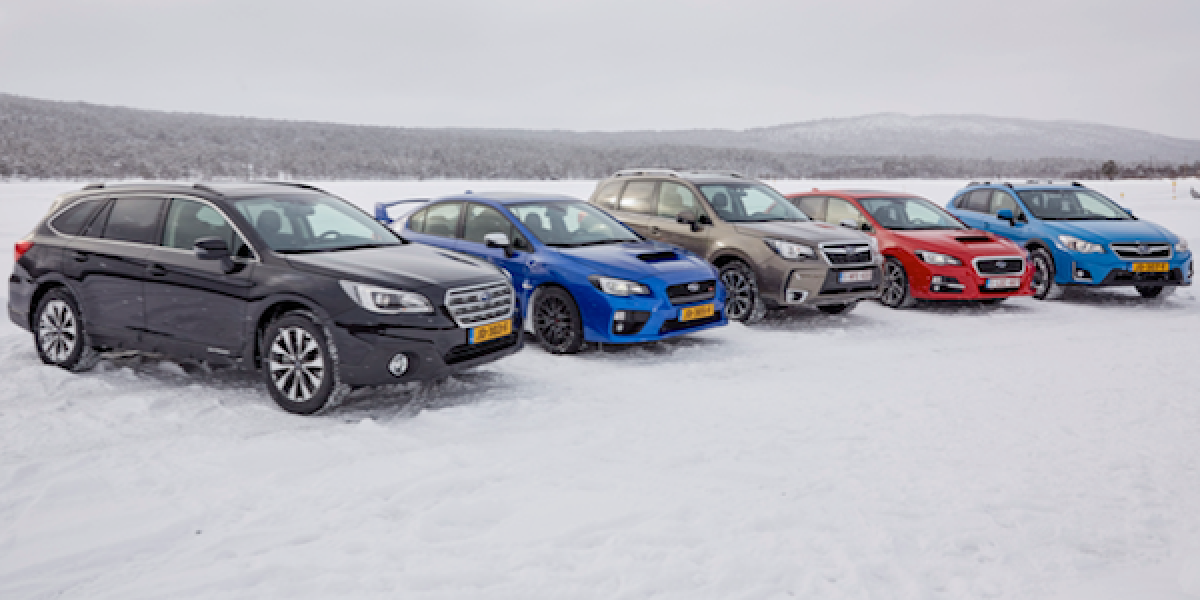Subaru uses what they call Symmetrical AWD to power their vehicles through the deep snow. But they don’t have a “one type fits all” approach with their multi-purpose vehicles. Each vehicle gets a “tailored” version of Subaru’s Symmetrical All-Wheel Drive to fit a particular powertrain or model. Here’s a rundown.
Continuous AWD
2017 Impreza 2.0i and 2017 Crosstrek models with 5-speed manual transmission; 2017 Legacy, Outback and Forester models with manual transmissions (where manual models are sold), and 2017 WRX with 6-speed manual transmission. Here’s how it works. A viscous-coupling locking bevel-gear center differential built into the transmission case distributes torque 50:50 front-to-rear. Slippage at the front or rear wheels causes torque to transfer (up to 100 percent) to the opposite set of wheels.
Active Torque Split (ATS)
All 2017 models, and the 2017 WRX, equipped with the Lineartronic continuously variable transmission (CVT) use ATS. How does it work? An electronically managed continuously variable transfer clutch actively manages torque distribution in response to driving conditions, acceleration, deceleration and cornering. Slippage at the front or rear wheels causes torque to transfer (up to 100 percent) to the opposite set of wheels.
Variable Torque Distribution (VTD)
Legacy and Outback models with the 3.6 engine, use an electronically controlled, continuously variable hydraulic transfer clutch works with a planetary gear-type center differential to control torque distribution between the front and rear wheels. Under most conditions, VTD uses a 45:55 torque split, with the rear-wheel bias contributing to handling agility. VTD responds to driving conditions to continually optimize torque distribution on all road surfaces. Slippage at the front or rear wheels causes torque to transfer to the opposite set of wheels.
Driver Controlled Center Differential (DCCD)
DCCD is exclusive to the 2017 WRX STI. In addition to its Symmetrical All-Wheel Drive, Subaru also uses Vehicle Dynamics Control (VDC) to Augment their vehicles AWD capability. It comes standard on every 2017 Subaru model except the rear-drive BRZ that gets VDC and rear-wheel traction control. The VDC system uses sensors “to compare where the vehicle is heading to where the driver is steering it.” The system will take corrective action to keep the vehicle on course if needed, and can apply brake pressure automatically and reduce torque to the wheels that need it.
Subaru uses four versions of Symmetrical AWD for their all-wheel-drive 2017 Forester SUV, Crosstrek crossover, Outback wagon, WRX and WRX STI performance models, Impreza compact and Legacy sedan. These four AWD versions set Subaru vehicles apart from the competition in the snow.
Photo credit: Subaru





